With the introduction of ChatGPT in November 2022, many got a first taste of what an AI chatbot can do when it comes to generating text—and it’s a lot.
Not only does ChatGPT answer questions, but it can form essays, poems, articles, with users able to specify the topic, length, tone of voice, and much more. While it’s raised questions about the future for professional writers and the ramifications for schoolwork, it’s also become a legitimate tool to increase productivity and efficiency.
In fact, a recent study conducted by MIT found that college-educated professionals who used ChatGPT to complete writing tasks were able to finish in nearly half the time it took those who relied on traditional word processors. The quality of their work also improved by 45%.
So what are the best ways to use ChatGPT to enhance your writing? It’s all about using effective prompts.
Read more: How to fix the error ‘OpenAI is not available in your country’?
Remember, you’re not having a conversation
Before you start using ChatGPT to enhance your writing, it’s important to see the AI for what it is. ChatGPT is not like Google or Alexa as it generates text, and is not able to give overly-factual information or interact with the physical world. It’s also not a human that you can give instructions to—no matter how helpful it may seem.
For example, if you asked ChatGPT to “proofread my essay and make corrections,” it wouldn’t know what specific changes or corrections you’re looking for without further clarification. It might suggest edits based on grammatical rules, but it wouldn’t have the contextual understanding that a human proofreader would bring to the task.
Basically, ChatGPT is a non-sentient machine that you program words into in order to generate the text you need. The more specific and elaborate your prompt is, the better ChatGPT’s response will be.
If you ask ChatGPT to “Write an essay about teacup pigs wearing sunglasses,” for example, the AI will generate a boring and straightforward piece that does little to satisfy your request.
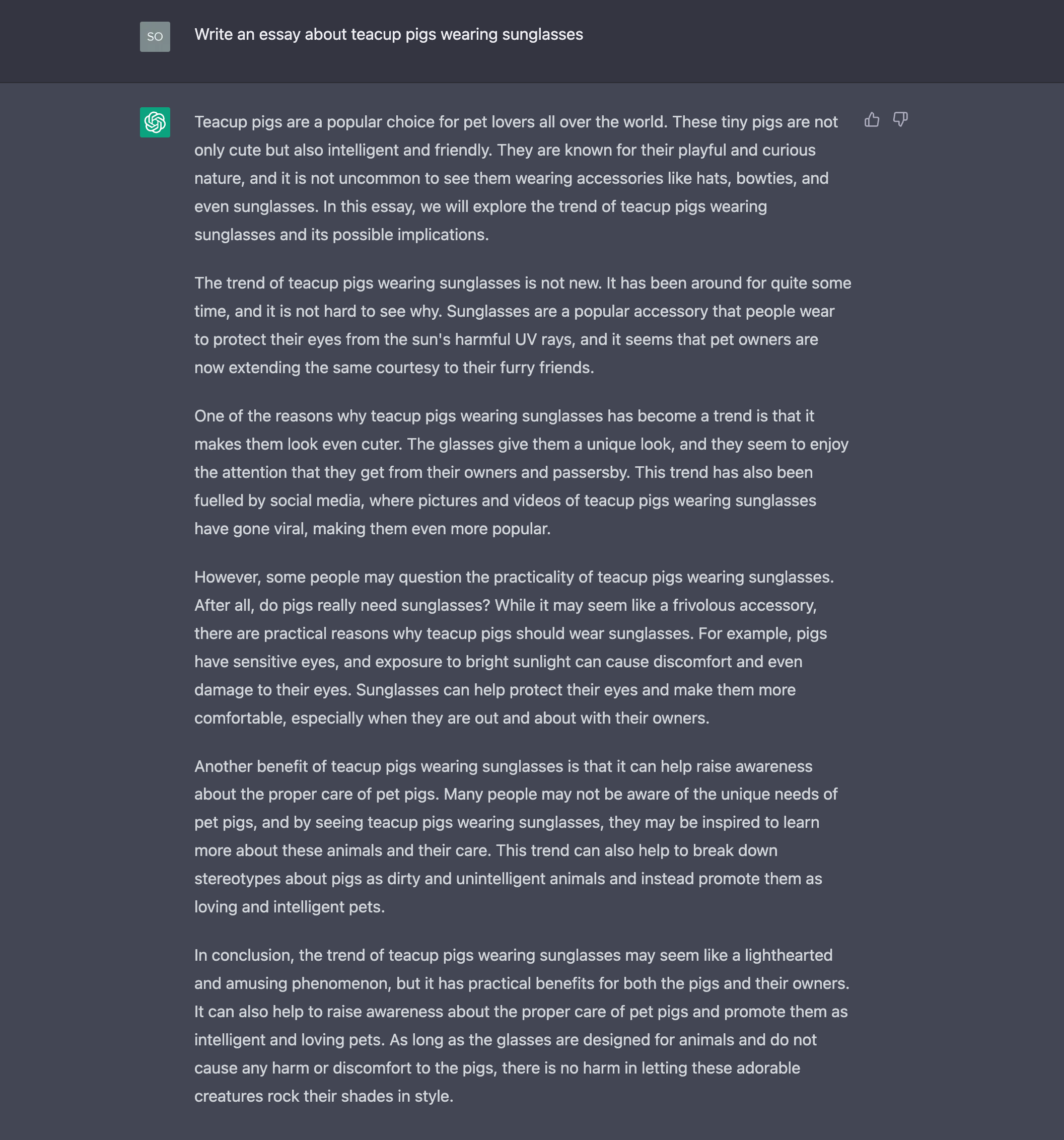
However, if you change your approach and provide clear bullet points to your prompt, you’re far more likely to push for the result you want.
For example: Write an essay about teacup pigs wearing sunglasses with the following points:
- Use a fun and witty tone that is thought-provoking and not too colloquial.
- Use at least one clear example.
- Make it concise.
- Write for a well-informed audience.
- Use a style like the New Yorker.
- Make it at least 7 paragraphs.
- Vary the language in each one.
- End with a pun.
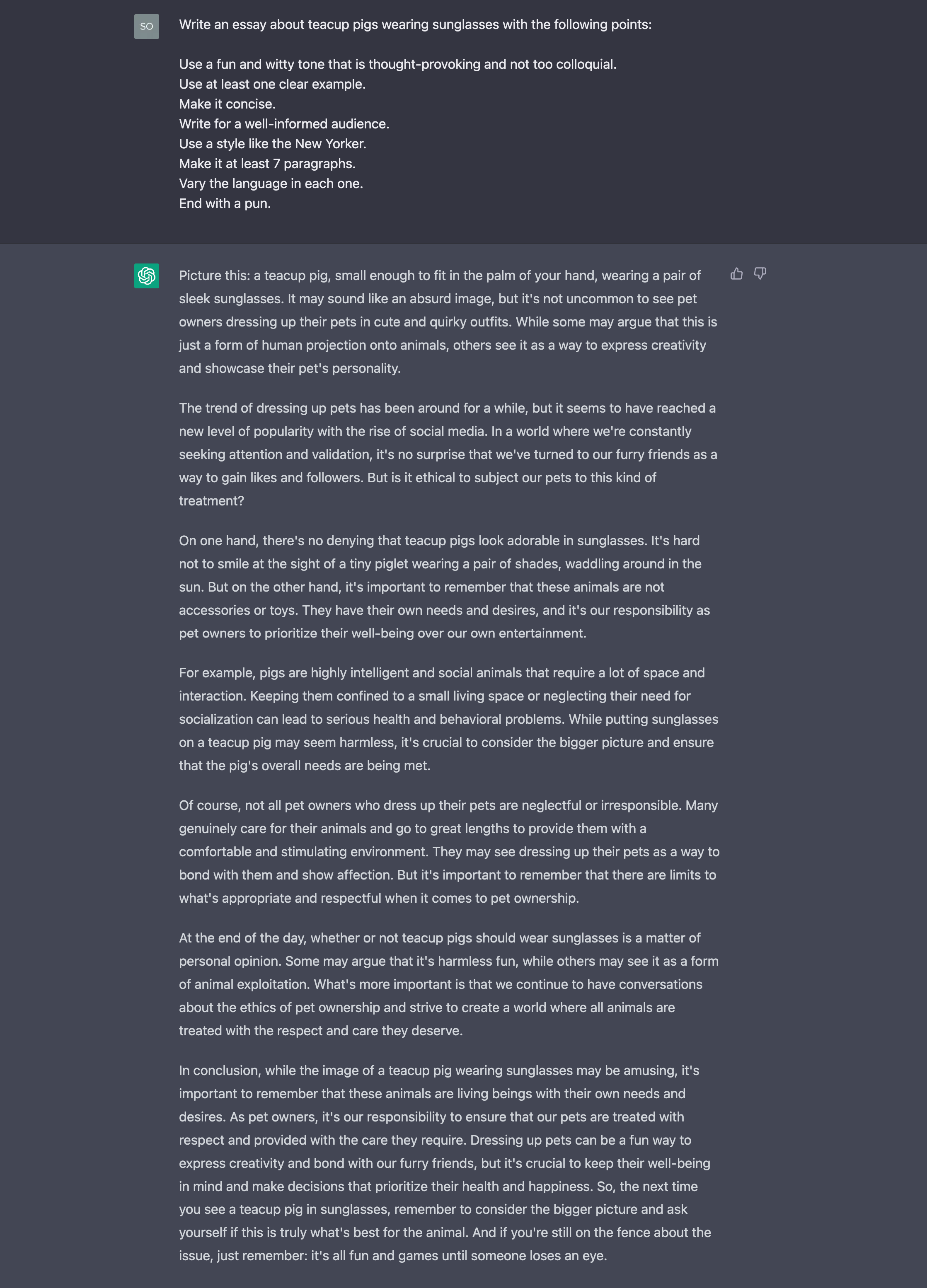
By using more unique prompts, you can get a much more comprehensive and unique version of what you’re after.
However, notice that not every part of the prompt has been followed exactly. A lot of what the AI wrote was also repetitive, and some of the points it made were out of context. This is typical of how generative AI works—you don’t always get what you directly ask for.
This is why we don’t recommend using ChatGPT to write copy for you from scratch as a) it tends to go on its own tangent and b) it has a tendency of making up its own facts. Instead, we suggest you use ChatGPT to:
- Enhance existing copy
- Generate ideas
- Improve your vocabulary
- Refine your writing style
- Learn about writing techniques
Dos and don’ts for prompting ChatGPT
| Do | Don’t |
| Ask for it to be “concise”, “coherent” or “detailed”. | Assume ChatGPT understands cultural or personal context. |
| Ask it to write in a specific tone (light-hearted academic, straightforward, etc.) | Ask it for facts that you can’t easily cross-check. |
| Let it know if you want to cater the piece to a particular audience (professional, student, layman). | Ask it to provide references or sources as these are usually made up. |
| Ask ChatGPT to emulate the style of a specific author or publication, such as the New York Times, tabloid news, or an academic journal. If you want it to write in your own style of voice, give it an existing sample of your writing. | Mix topics in a single chat. If you change topics, start a fresh chat with the AI else it may muddle your results. |
| Use examples or analogies to clarify your question. | Feed it sensitive or confidential information that could potentially be leaked. |
| Make sure you use follow-up questions to dig deeper, or to get the AI to clarify any points that aren’t clear. | Have it do math, or conduct analysis as the output will likely be wrong. |
| Take advantage of its memory, and ask it to revise previous work. | Ask it to only do one thing at a time. ChatGPT works best when it gets as much information from you as possible. |
| Break up your requests into smaller, digestible chunks. For example, start with the introduction and work your way to the conclusion. | Accept the first result if it’s not exactly what you want. Keep experimenting and iterating, and challenge ChatGPT to find the answer you’re looking for. |
Use ChatGPT to enhance your copy
From refining your writing style to generating fresh ideas and improving your vocabulary, ChatGPT can help breathe life into your words. It can also help you save time—anything that can speed up the writing process is a valuable tool.
Let’s take this problematic paragraph that attempts to answer the question, “Should humanity be worried about AIs taking over the world?” There are obvious spelling, grammatical, and phrasing mistakes:
“Many people thinks that AI is dangerous and could take over the world. The idea of robots be in control is terrifying and a lot of people is worried about this. But, we shouldnt forget that AI is programmed by humans, so it doesnt have the ability to do things on its own. So, humans shouldnt be worry about it.”
Now let’s ask ChatGPT to correct it while giving it prompts to enhance the argument the paragraph is trying to make:
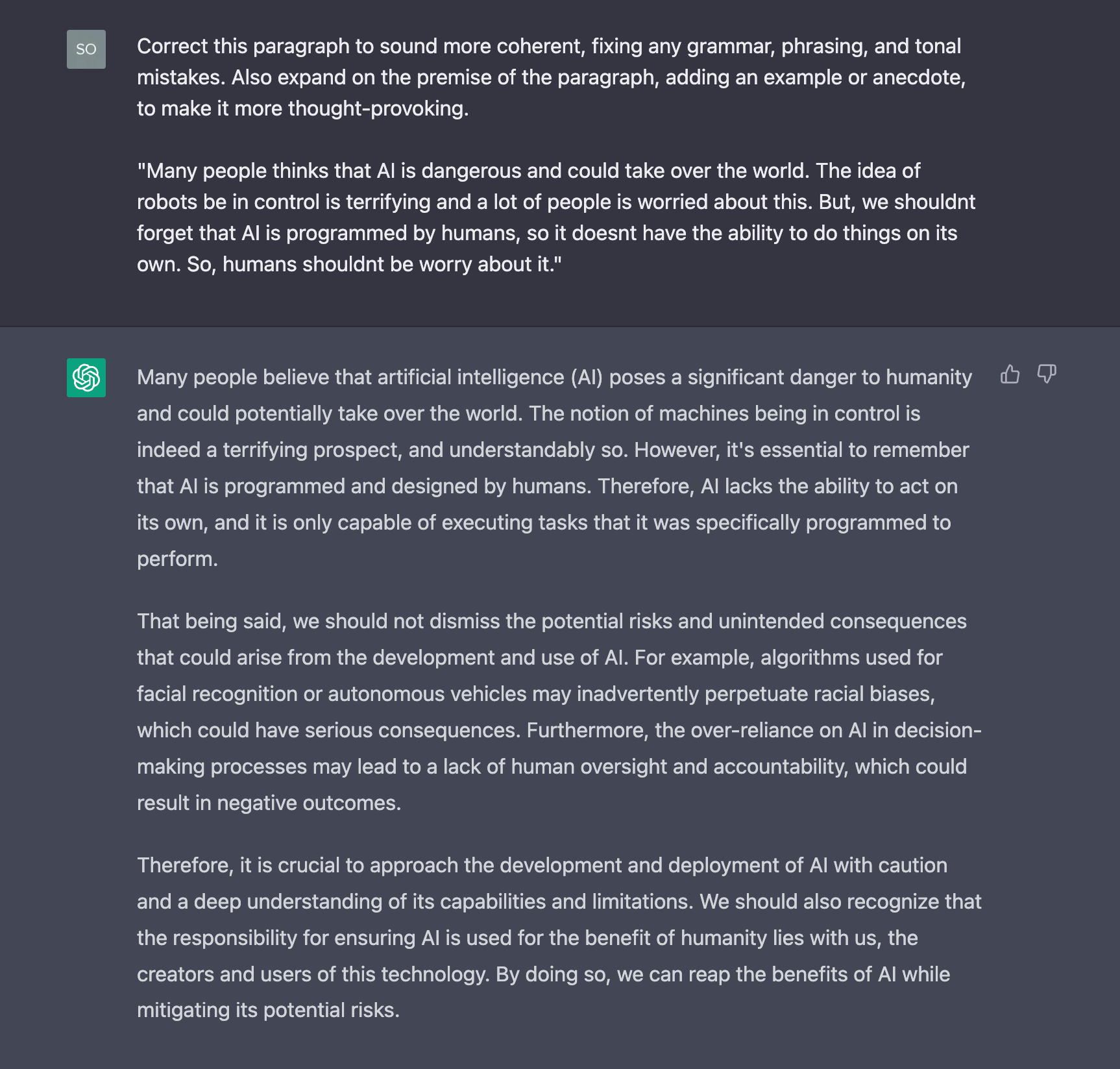
Not only did the AI give the original paragraph a clearer and more concise structure, but it also aimed to make it more intriguing. Several spelling and grammatical mistakes, such as tense consistency and sentence structure were fixed. It also used appropriate conjunctions and transitional phrases to improve the flow and coherence of the paragraph. Lastly, it avoided contractions to make the writing more formal and professional.
While the reworked paragraph isn’t necessarily perfect, it does give the writer more to work with, pushing them to change their writing style and expand on their thinking process.
When using ChatGPT to enhance your writing:
- Start with a clear goal: Before interacting with ChatGPT, have a clear idea of what you want to achieve. Identify the specific problem you’re trying to solve or the question you want to answer.
- Input relevant information: To get the best possible response from ChatGPT, give it as much relevant information as possible. This can include background information, context, and any other relevant details you can think of that it can rework to get your point across.
- Use specific prompts: As mentioned above, be as specific as possible in your prompts. This will help ensure that the responses you receive are relevant and useful.
- Evaluate the responses: When you receive a response from ChatGPT, take the time to evaluate it carefully. Look for ways to refine and improve your existing copy based on the insights provided. Don’t just lift them directly.
- Iterate and refine: Once you have evaluated the response from ChatGPT, use the insights gained to refine and improve your existing copy. Iterate this process until you are satisfied with the results.
Use ChatGPT to generate ideas
We’ve all had moments when our creative wells run dry, and we find ourselves struggling to come up with new ideas. ChatGPT is trained on vast amounts of data from the internet, including books, articles, and other written works, which means it has access to an immense wealth of information. This can help stuck writers come up with ideas that are relevant, informative, and creative.
Here are some tips for using ChatGPT to help you spark new ideas:
Prompt ChatGPT to think like your target audience
One way to generate new ideas is by putting yourself in the shoes of your target audience. For example, if you’re trying to come up with marketing ideas for a new product, you could ask ChatGPT to think like a potential customer and provide you with insights on what would appeal to them.

Ask it to create a “what if” scenario
ChatGPT can be a valuable tool when asking “what if” questions by generating hypothetical scenarios based on your prompts.

Have the AI play a character
Another way to get interesting ideas out of ChatGPT is by asking it to play a character. You can prompt the AI to think of itself as a historical figure, a famous author, or even a fictional character. This can help you gain new insights and perspectives that you may not have considered before.
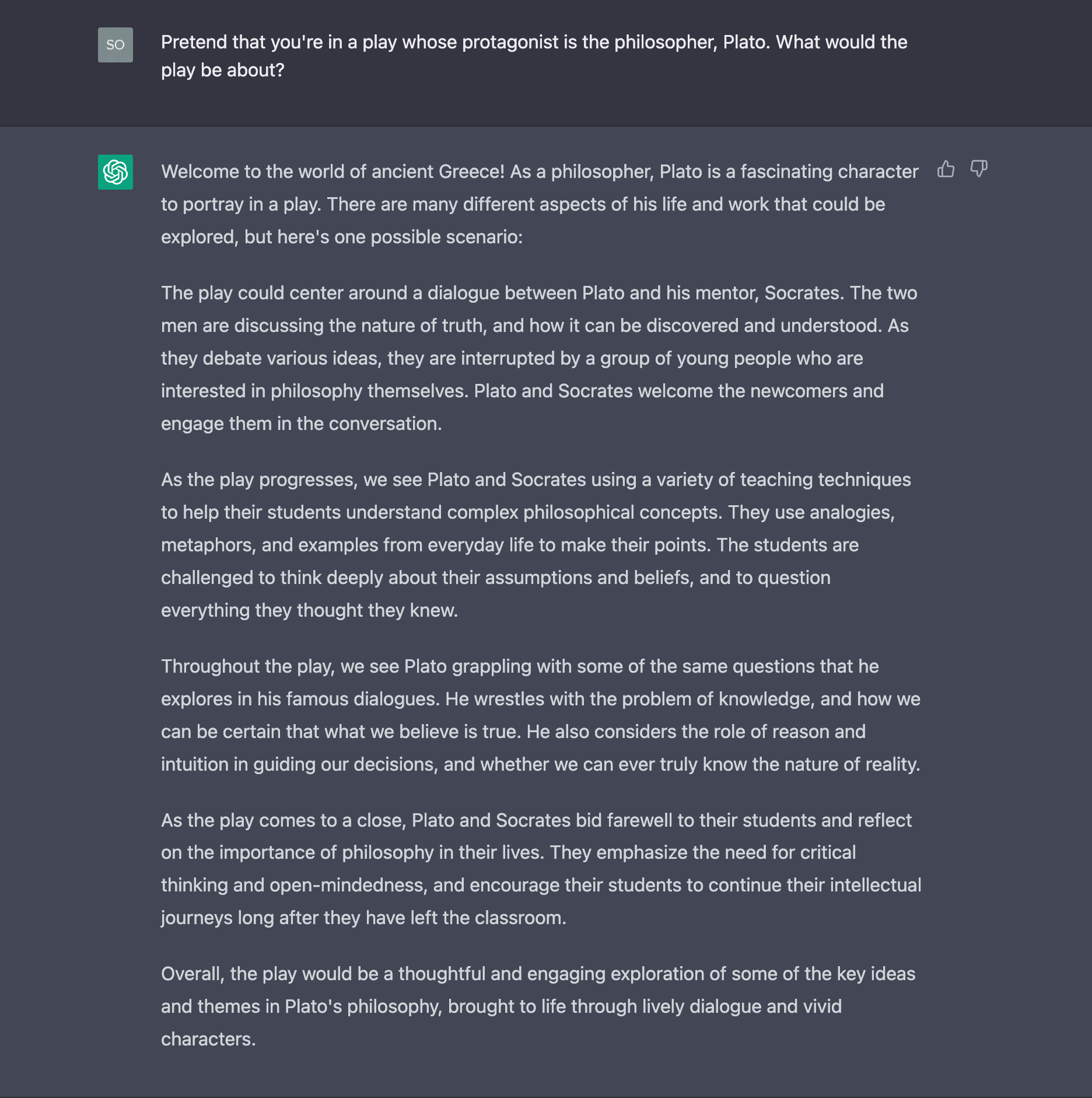
Ask for analogies and metaphors
Analogies and metaphors can be powerful tools for generating new ideas and understanding difficult and complicated topics. They can also help you to gain a fresh perspective on the subject at hand. For example, if you’re writing about a complex mathematical concept, but struggling to get your head around it, you could ask ChatGPT to provide a metaphor that would help you understand it better.
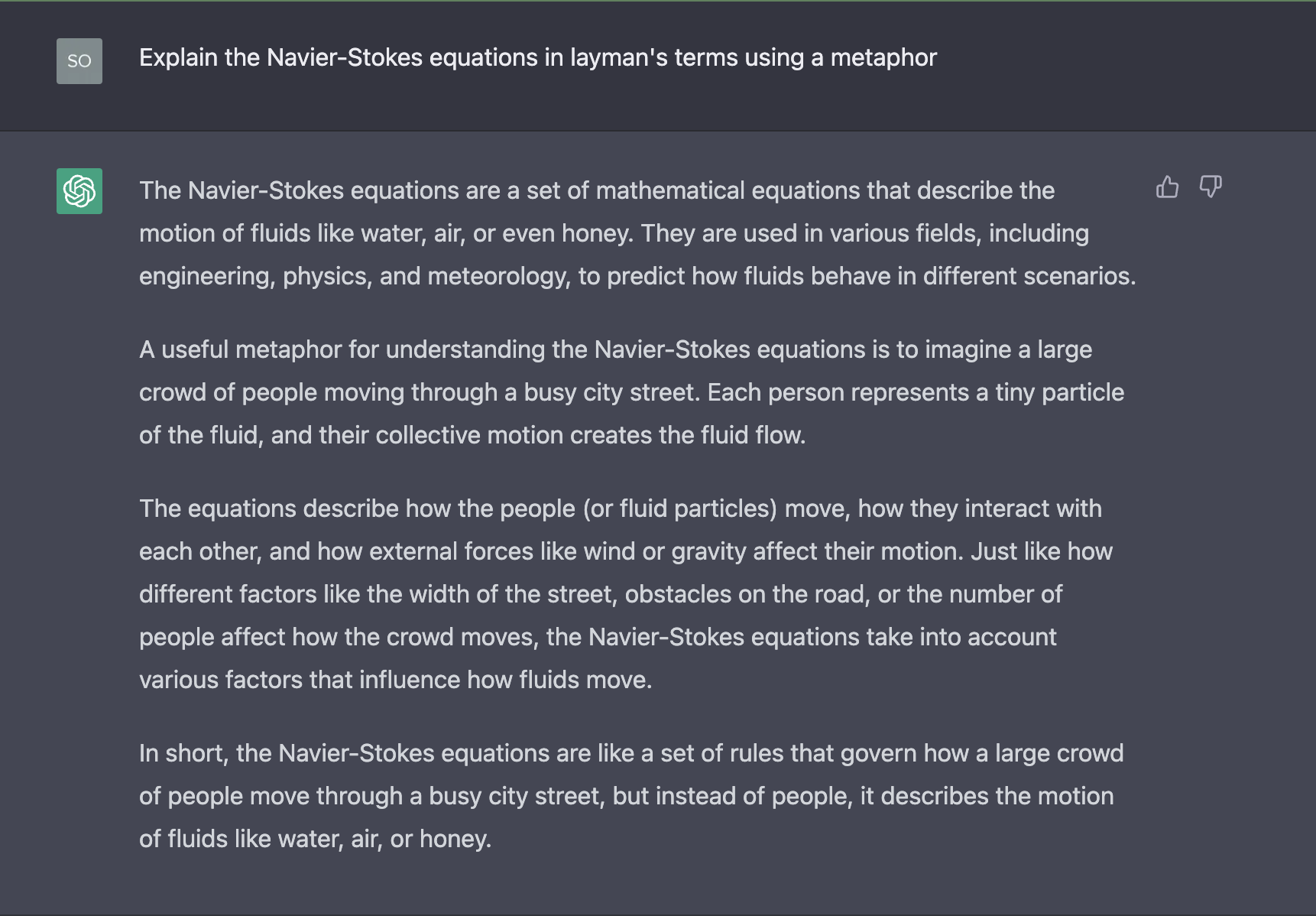
Use ChatGPT to generate random words and phrases
Trained on massive amounts of text, ChatGPT has the ability to generate an endless array of random words and phrases. This functionality can be a valuable tool for those who want to expand their vocabulary. ChatGPT can also help generate a random phrase that could be used as a starting point for your writing.
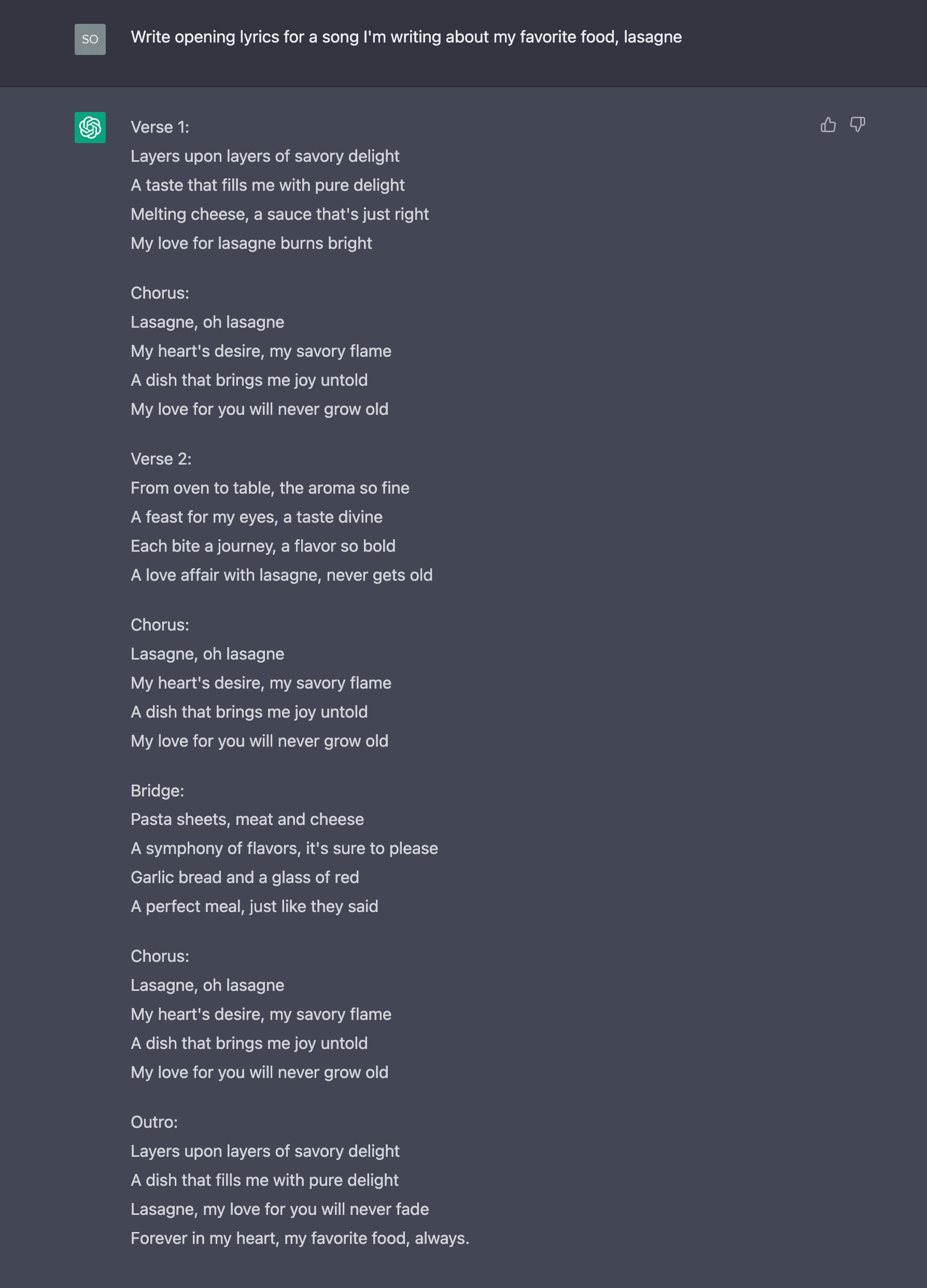
Use ChatGPT to improve your vocabulary
If you’re stuck on finding the right word to convey a particular meaning, you can ask ChatGPT to suggest synonyms or antonyms. You can also use ChatGPT to learn new words and their definitions, which can help you expand your vocabulary and improve your writing.
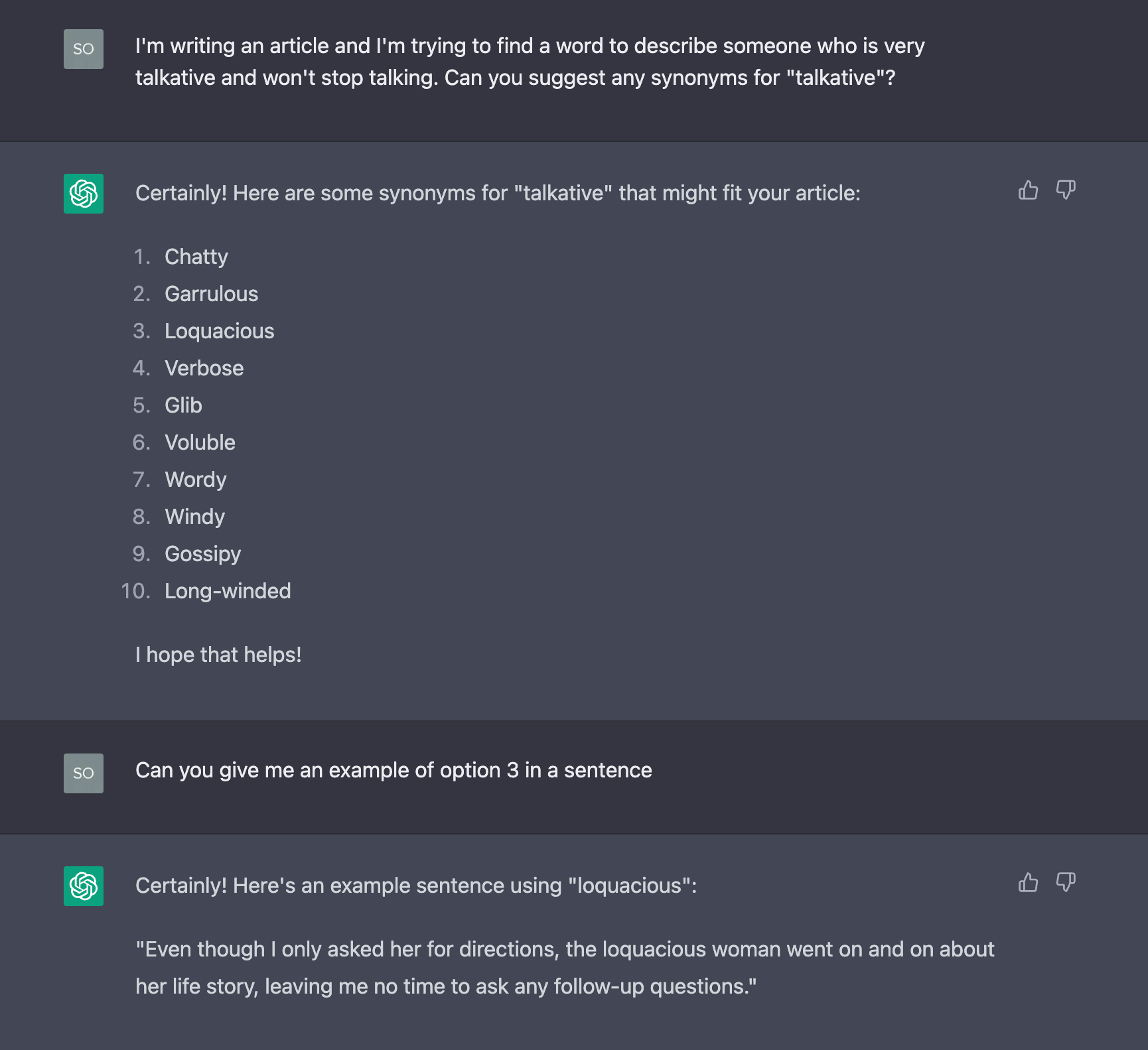
Use ChatGPT to refine your writing style
A writing style is a particular way of expressing oneself in writing, which is often characterized by the use of specific language, tone, and structure. ChatGPT can provide guidance on various writing styles, including descriptive, narrative, expository, and persuasive writing.
Additionally, the AI can help you understand different writing genres so you can pick the best one to suit your needs for a particular piece. For example, fiction, non-fiction, poetry, drama, and screenplays. ChatGPT can also analyze your writing to ensure you’re sticking to a particular style of writing, such as SEO writing, and genre. It can also assist you in learning how to structure your writing before you even begin putting your thoughts onto the page.
For example, if you’re tasked with writing an essay on The Importance of Regular Exercise for Mental Health, you can ask ChatGPT to help you with its structure:
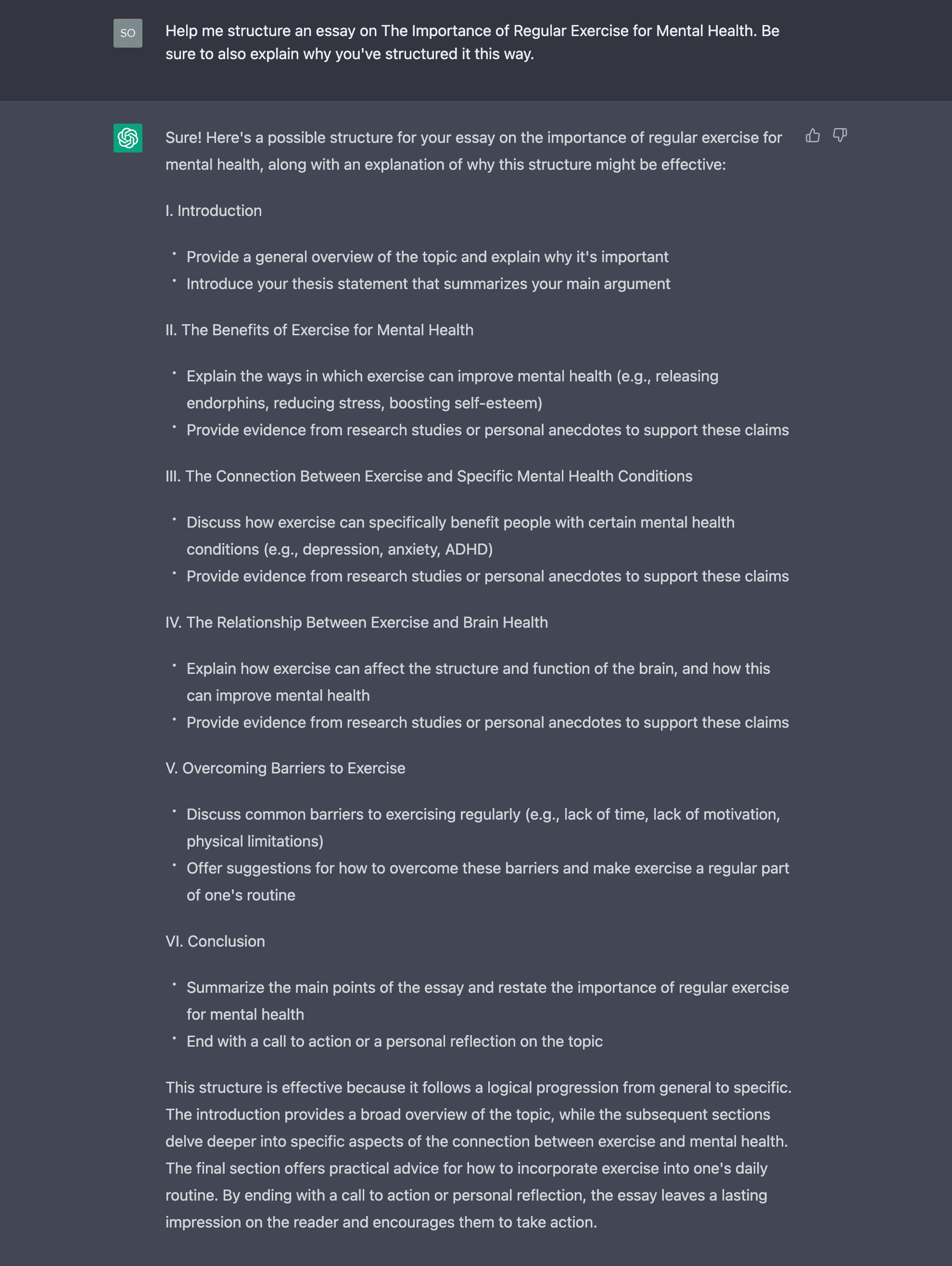
Use ChatGPT to learn about new writing techniques
From summarizing and paraphrasing to storytelling and symbolism, here are 10 writing techniques that ChatGPT can help you master:
| Technique | How ChatGPT can help |
| Summarizing | ChatGPT can help you condense complex information into a clear and concise summary, and suggest ways to focus on the most important points. |
| Paraphrasing | Use the AI to rephrase text in your own words while retaining the original meaning, and suggest alternative phrasings to improve clarity and coherence. |
| Synthesizing | Ask ChatGPT to help you combine information from multiple sources to create a coherent and original argument or narrative, and provide guidance on how to attribute sources appropriately. |
| Editing and proofreading | When in doubt, ask ChatGPT to help you identify errors in your grammar, spelling, and punctuation, and provide guidance on how to improve the clarity, coherence, and style of a particular writing piece. |
| Storytelling | ChatGPT can provide guidance on how to structure a compelling story, develop engaging characters, and even create tension and conflict. |
| Active voice | Identify and revise passive voice constructions by prompting the AI to do it for you. Also, ask it to help provide guidance on how to use the active voice effectively to improve clarity and engagement. |
| Dialogue | Advance a story’s plot through dialogue by asking ChatGPT to craft realistic and engaging conversations between characters. |
| Symbolism | Ask ChatGPT to come up with symbols to represent abstract themes and ideas in your writing. This will help deepen your narrative. |
| Tone | Ask ChatGPT to identify the tone of your writing and adjust it to fit your audience and subject matter. |
| Transitions | Connect ideas and paragraphs in a clear and logical way by using effective transition words and phrases. |
How do you use ChatGPT to enhance your writing? Let us know in the comments below.
Read more: How to fix ‘ChatGPT is at capacity’ error with a VPN
FAQ: About ChatGPT
How many users does ChatGPT have now?
ChatGPT reached 100 million users in the first two months since it launched (on November 30, 2022). ChatGPT gets more than 13 million daily visitors.
Is ChatGPT free?
Yes, you can use ChatGPT for free. The service does offer a paid version, called ChatGPT Plus. It’s currently available to people in the U.S. on a waitlist. It costs 20 USD a month, and provides access to ChatGPT during peak times, faster response times from the chatbot, and priority access to new features and improvements.
Is ChatGPT an app?
No, ChatGPT does not offer a downloadable app. Users must access it in a browser at chat.openai.com
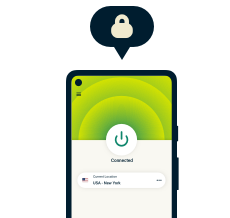
Take the first step to protect yourself online
30-day money-back guarantee
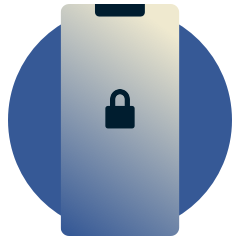
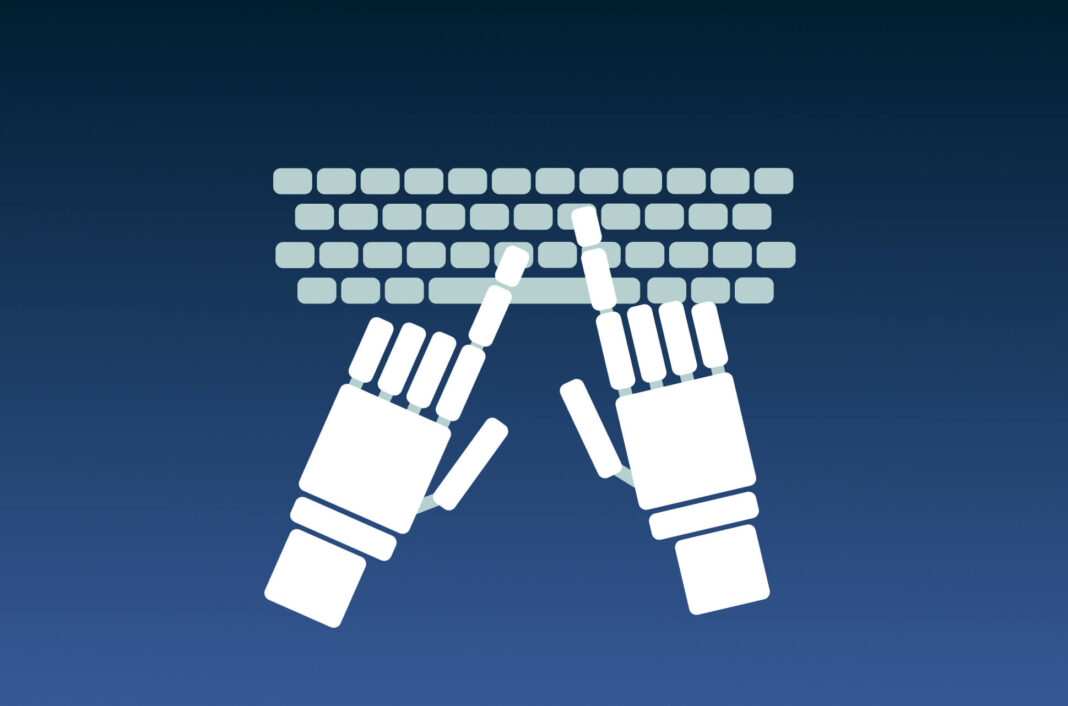
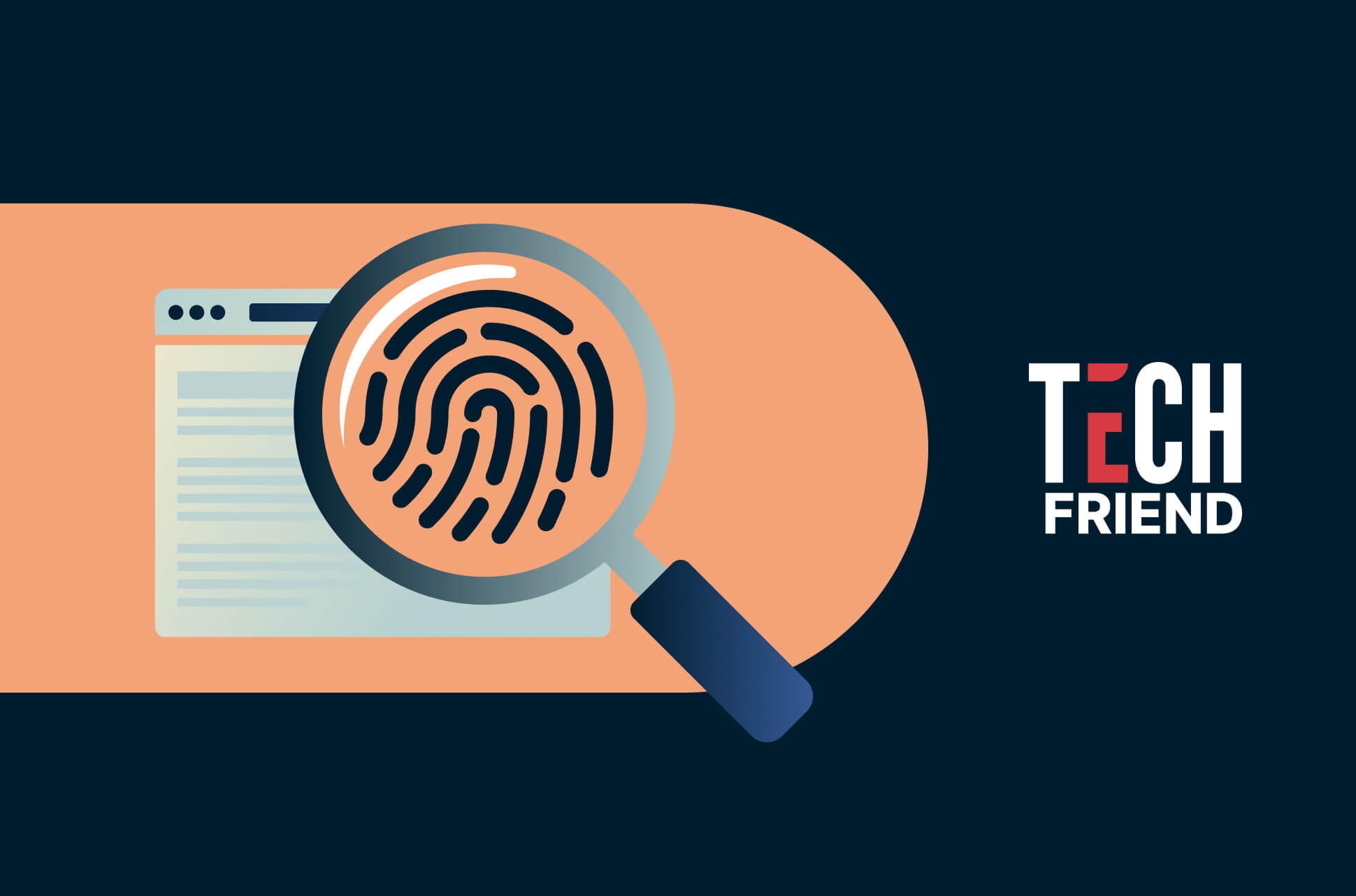
























Comments
This guide is a game-changer for writers! I appreciate how clearly it explains how ChatGPT can enhance writing skills, from brainstorming to editing. The practical tips are incredibly useful and actionable—thanks for sharing such valuable insights!
Lots of useful information in this post. Thanks. Chat GPT can help us in so many ways. And this is only the beginning.
I hope humanity will use it for good. (Fingers crossed)
It seems interesting to improve a text in English ?
absolutely useless.
i write what i want.
i edit it.
no need for a dumb software to mess it up.
Thank you for the valuable information on the blog.
I am not an expert in blog writing, but I am reading your content slightly, increasing my confidence in how to give the information properly. Your presentation was also good, and I understood the information easily.
This article should have been titled “How to Use ChapGPT to Do Your Writing for You”–because that’s essentially what you get when you add up all the tasks above.
Real writers with a conscience should stay away from this digital witch, unless they wish to lobotomize their innate potential as writers. I’ll let A.I. run spell checks and otherwise take out the garbage. The rest is up to me and me alone.
The title of this piece should have been, “How to Use ChatGPT to Do Your Writing For You”–because that’s essentially what happens when you ask it to perform tasks in multiple areas that add up to what is the “writing process.”
Real writers with a conscience should stay the hell away from this digital witch, unless they wish to lobotomize their future innate writing potential. A.I. can run spell checks and otherwise take out the garbage for me; no way I’ll let it do more.